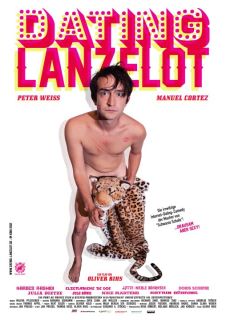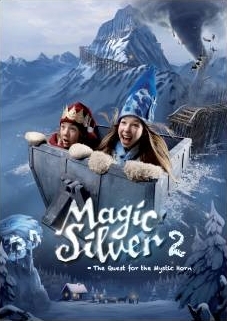The Making-of 2011
Case Studies
| Case Studies Overview | 200.000-1 mio Euro | around 2 mio Euro | 3D Film |
|---|---|---|---|
| Title (country) | "dating lanzelot" (DE/CH) | "une estonienne à paris" / "a lady in paris" (FR/EE/BE) | "blåfjell 2" / "magic silver 2" (NO) |
| Director | Oliver Rihs | Ilmar Raag | Arne Lindtner Ness |
| Presented by producer | René Römert | Gilles Sacuto | Jørgen Storm Rosenberg |
| Production company | Port-au-Prince Film and Kulltur produktion (D) | TS Productions | Storm Rosenberg AS |
| Postproduction provider | Swiss Effects Film GmbH, Ruedi Schick | Digimage Cinéma, Tommaso Vergallo | The Post Republic, Michael Reuter |
| Budget approx. in Euro | 450.000 € | 2.600.000 € | 4.000.000 € |
| Camera | Canon 5D & Panasonic full HD | ARRI ALEXA | RED |
| Post-production/Colour correction in | 2K | 2K | SI 2K |
| Format / projection | 35 mm/1.85 and DCP | 35mm/1.85 – 4 perfs / DCP | 2D and 3D |

Case Study 1: «dating lanzelot» by Oliver Rihs, presented by its producer, René Römert, and its post-production provider Ruedi Schick, Swiss Effects Film GmbH
Focus on shooting with DSLR cameras – fix it in post ?
At the origin, it was a web project, low budget (115.000€), developed with an Internet portal, hosted by the German Telecom, and supported for 50% by the MedienBoard Berlin-Brandenburg. This is a fictional comedy webisode, including 8 episodes of 15mn each, about Internet dating. It was shot in 23 days, with Canon 5D and Panasonic (to give a different style to some scenes but it has not been an easy exercise for the DP), full HD.
From the very beginning, the producer and director had the idea of possibly turning it into a feature film. They knew they did not have the necessary funding to shoot and post-produce it as a cinema production (home lab etc.) but were hoping that the material could be used.
Luckily enough, the post-production company Swiss Effects Film GmbH got interested in it and entered the project. Budget had been increased, also because a German TV came on board (ProSieben), which enabled them to cover all the feature production and post-production costs.
Lots of efforts had to be displayed; indeed, most material (about 40 hours of raw material) was shot but in different formats, 3 different editors had been working on the project, Final Cut Pro had been used, a system with two computers was built at the production site: no calibration (grading), same problems for the sound. It was a real challenge for Swiss Effects. But, bearing in mind the subject and the style of the film, it is possible to have imperfections. It lasted half a year to “arrange“ the material, add some animation, work on the grading, sound design and new music. It has been a real teamwork and a strong collaboration between the production lab and the post-production provider.
The film was premiered at the Zürich Film Festival in September 2011 and later at the Filmfest in Hof.
Main advice given: avoid mixing formats, leave the workflow as open as possible in order to be able to go back to the source. Soundwise and picturewise, it should be separate.
Case Study 2 — “Une Estonienne à Paris“ by Ilmar Raag, presented by its producer Gilles Sacuto and its post-production provider Tommaso Vergallo, Digimage Cinéma.
Focus on a film shot with ARRI Alexa (see the Technical Focus by P. Ros [PDF])
This project is a co-production between France, (70%), Estonia (20%) and Belgium (10%). The film is being completed.
The film was initiated by the Estonians since the director, Ilmar Raag, is Estonian. His previous film had been a huge success in his country and travelled abroad quite well. Ilmar studied in Paris, speaks French, which explains the story of the film, and thus wanted France to be involved in the project. This is how TS Productions has been approached by his Estonian producer, Riina Sildos / Amrion. They decided to work together but raising the money in France has been difficult and long, the market is very competitive; Belgium then came on board (Philippe Kauffmann / La Parti Production).
The film was shot in 38 days, 35 in Paris and 3 in Estonia, in March/April 2011. The Director of Photography is Laurent Brunet; this is his fourth film with TS Productions. He proposed shooting on ARRI Alexa (first experience for the producer).
Three clips were screened:
- Shoot in Estonia: exterior, winter time with snow and at night. Shooting and grading on Alexa. Laurent Brunet knew the problems they would face with the lights of the car; he took the necessary precautions.
- Shoot in Paris: interior. Problem with the light in the flat: too much natural light coming from outside.
- Shoot in Paris: in the subway. This scene shows the big sensibility of the Alexa camera and the fluid movements obtained with it.
There has been a constant communication with the lab, from the very beginning. This is an Alexa project but with a traditional setting, as for 35mm, with the use of a clap for each take. The SxS cards were sent to Paris with back up dailies. Laurent Brunet shot logorhytmic. There was no digital grading during shooting, no DIT operator (the DoP checks the image), just a camera operator. This was an old fashioned, linear workflow. This was the choice of the DoP based on the type of the film and story; he wanted to support the director’s approach focused on the actors as much as possible. Shooting with the Alexa was much more appropriate to him.
The speakers also showed some comparison tests on another film, from the same production company, between 35mm and ARRI Alexa. It was difficult to notice the difference because they’ve used a regrain process on the Alexa.
So what’s the benefit of shooting in Alexa vs. 35mm? Is it moneywise ? Yes but not only: several DoPs prefer this camera for a question of comfort and adaptation to the style of the film to be shot.

Case Study 3 — «Blåfjell 2 / Magic Silver 2 » by Arne Lindtner Ness, presented by its producer Jørgen Storm Rosenberg and its post-production provider Michael Reuter Focus on a live-action 3D film (also see technical 3D focus by Wolf Bosse)
This 4m € production is the sequel to the successful children’s action adventure « Magic Silver » on the Blue Gnomes, produced by Storm Rosenberg AS, that reached more than 350.000 Norwegian spectators in 2009 and was sold to 50 countries.
Why making a 3D film for the sequel ? Because it is a wonderful tool to tell the story more lively; we give more to the audience for an adventure film.
When the development of the project started, it was a huge challenge for a Norwegian company. Before “Avatar“, there was some interest for 3D in the film industry but very little experience, not to say none.
The production company first explored the Scandinavian route but the producers were told by the labs that this project was not for them.
Luckily enough they saw a British 3D film, met the producers to know more about their experience and the post-production companies they’ve worked with. This is how the first contact with the Post Republic, based in Germany, was done. At that time, the latter had only two 3D films as a track record. It has been a strong collaboration between them, the rental company, the lab and the producer. Teamwork is key especially on low budget films for 3D (the film was originally budgeted at 3 Mio€) in Europe (vs. the US low budget films at 10 Mio€).
The budget was increased by about 1Mio€ because the crew is bigger than on a « standard » film (new heads of department); other direct additional costs include equipment and CGI are expensive. Indirect costs are mostly linked to the 2 necessary versions for distribution, 2D and 3D, on DCP.
Already at script stage, lots of elements have to be discussed and taken into consideration. The film has been storyboarded. It is important to work on space and depth at the same time. Mine sequences are complicated, a significant preparation is required. They worked with Vision 3 (UK) for the crew and the stereographer. Two digital cameras were used, a synchronising unit was needed to synch cameras. But it did not work all the time and some scenes had to be reshot, a situation that was not so easy to handle with the insurance company. It is key to work with an experienced crew who can spot and evaluate problems. The stereographer was on set with his own crew, daily check was done .
At the stage of post-production, different corrections due to imperfections of the rigs (rigs were big at the time of the shooting; there are smaller ones that can be shoulderheld but be careful to the quality) and special processes were needed:
- Corrections of faults: colour, synch corrections, geometrical corrections.
- Processes to manipulate stereoscopic in post: depth grading, sweetening = smoothering convergence/interocular differences from cut to cut.
It has been a fascinating, challenging experience. Once more, it is important to choose the right provider(s) and to establish a constant dialogue from very early stage with them, and thus consequently with the crew. Equipment has already significantly evolved since the shoot of the film and the rental companies, post-production labs and providers have gained in experience. A prior research, investigation is recommended as well as the most realistic estimated budget to decide whether a 3D adventure is worth and the film more profitable in this format.
“Magic Silver 2“ is completed and has just been released in Norway (on the 18th November, 2011), good first week. 63 countries were sold but not big amounts. The 2 versions (2D and 3D) are needed.
The Making-of 2011
- Presentation
- Summary
- Case Studies
- Technical Focuses [PDF] by P. Ros
- Participants’ Projects
- Workflows of Participants’ Projects [PDF] by P. Ros
- The DCI Manufacturing Process and Digital Cinema Distribution
- The Market for Digital Distribution in Norway and France
- 3-D Filmmaking
- Photo Gallery